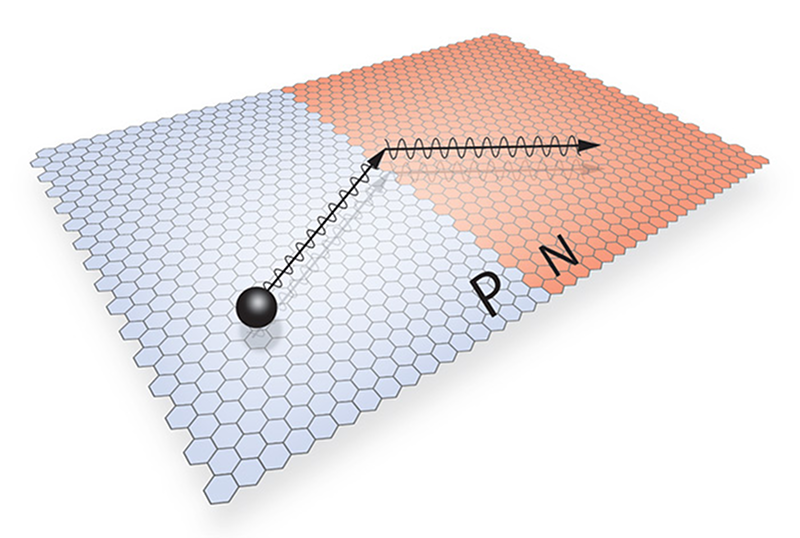Researchers recently observed negative refraction of electrons in graphene PN junctions. The creation of PN junctions in graphene is quite interesting, itself. Negative refraction isn’t a new idea. It was first proposed in 1968 and occurs when a wave bends–or refracts–the opposite way at an interface compared to what you would usually expect. In optics, for example, this can allow for refocusing divergent waves and has been the basis for some proposed invisibility cloaking devices.
In theory, negative refraction for electrons should be easy to observe at PN junctions, but in practice, the band gap voltage causes most electrons to reflect at the junction instead of refract. However, a graphene PN junction has no band gap voltage, so it should be ideal. However, previous attempts to find negative refraction in graphene were not successful.
[Cory Dean] and his team at Columbia theorized that the problem was atomic-scale roughness at the interface caused by the fabrication technique most researchers use. They likened the effect to a scratched piece of glass. To combat it, they used a natural edge of a graphene flake to form the junction and found clear evidence of refraction.
The team hopes to investigate practical applications. One possible use would be as a very low power electronic switch by bringing an electron beam to focus at two different points.
We’ve seen a lot of research into making graphene more practical. We’ve also seen novel applications. Who knows what’s next?
















I bet you could make a flake of graphene shake at crazy high frequencies – way above crystals.
But graphene is a crystal
Does this mean Billy Crystal is Graphene, Mind blown What to make of city slickers now.
Way above quartz crystals. I see a different mechanism. There is a change of momentum when the electron refracts. Maybe a very small and low mass piece can resonate mechanically. That’s my theory and I’m sticking with it!
To me the following intro would have made more sense:
Negative refraction occurs when a wave bends–or refracts–the opposite way at an interface compared to what you would usually expect. In optics, for example, this can allow for refocusing divergent waves and has been the basis for some proposed invisibility cloaking devices.
Negative refraction isn’t a new idea, it was first proposed in 1968. But recently, it has been observed to occur in graphene PN junctions with electrons.